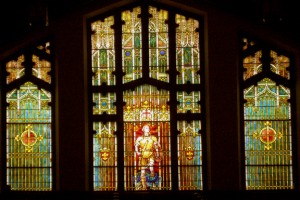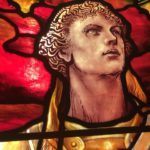 REVISED as below in red.
REVISED as below in red.
Light shining through a church window can be like God’s light offering solace to one’s heart. On Saturday and Sunday, January 25 and 26, Dan Aubrey (of Community News NJ and U.S. 1 Newspaper) offers stained glass window tours in Trenton and Princeton. Aubrey is a long-time appreciator of beautiful windows who has written about windows for his publications, and he has a Facebook page, Stained Glass Project of Greater Trenton and Princeton.
In Trenton, come to ST. MICHAEL’S EPISCOPAL CHURCH, 140 N Warren Street, on Saturday, January 25, 2020 at 3 p.m. Here, you will see glass by Tiffany, the Victorian England-era Kempe Company, and the NJ-based Lamb Company. Aubrey will present a slide show of the area’s stained glass and then lead the group across the street to the CATHEDRAL OF ST. MARY OF THE ASSUMPTION to see creations by the former Edward Byrne Company in Bucks County.
In Princeton, come to PRINCETON UNITED METHODIST CHURCH (PrincetonUMC) on Sunday, January 26 from noon to 1 p.m. Dan Aubrey will speak at 12:30 p.m and town-wide tour handouts will be distributed. (The schedule has changed in order to accommodate a special service. Please email windows@PrincetonUMC.org to schedule additional times). Take the guided or self-guided tour of this 1910 Arts and Crafts style church, with its Tiffany window and other windows with glass that is milky, not translucent. 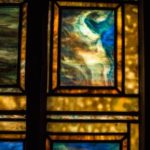 Discovered at the end of the 19th century, this “opalescent” glass could have different shades and colors in a single piece. In the balcony, the Tiffany window shows St. George and the Dragon. In the next room is a spectacular triptych by Louis Lederle, a former Tiffany artist, and the adjoining chapel has some sweetly sentimental windows dating from the 1940s.
Discovered at the end of the 19th century, this “opalescent” glass could have different shades and colors in a single piece. In the balcony, the Tiffany window shows St. George and the Dragon. In the next room is a spectacular triptych by Louis Lederle, a former Tiffany artist, and the adjoining chapel has some sweetly sentimental windows dating from the 1940s.
Aubrey will lead the group to three other churches in Princeton: St. Paul’s, the University Chapel, and Trinity Church on Mercer Street. Princeton UMC remains open until 3 p.m. Please email windows@PrincetonUMC.org to schedule a time convenient to you. All are welcome, and the tour is free. Click here for details.

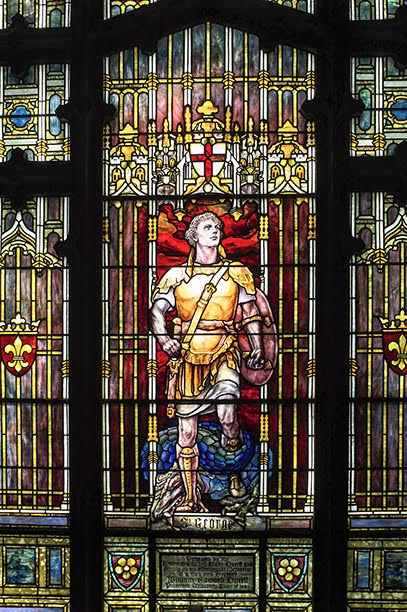
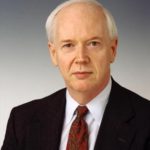 poet Edmund Spenser, for example, named the Redcrosse Knight as the champion of holiness in The Fairie Queen,” says Duncan. “The knight and Una, representing the true religion, are finally betrothed after he has killed the dragon. The figure Gloriana represents glory in the abstract, and Queen Elizabeth I in particular. ” St. George became the patron saint of England in the 14th century and is now the patron saint of Moscow. Many of the most famous artists depicted St. George, and almost every major museum has a painting of him.
poet Edmund Spenser, for example, named the Redcrosse Knight as the champion of holiness in The Fairie Queen,” says Duncan. “The knight and Una, representing the true religion, are finally betrothed after he has killed the dragon. The figure Gloriana represents glory in the abstract, and Queen Elizabeth I in particular. ” St. George became the patron saint of England in the 14th century and is now the patron saint of Moscow. Many of the most famous artists depicted St. George, and almost every major museum has a painting of him.
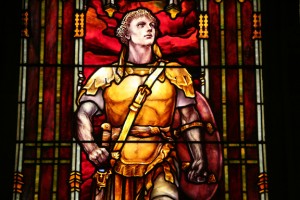 Our 105-year-old building has a spectacular stained glass window from the renowned Tiffany Studio of New York City. How did PUMC acquire a window with such an unusual subject?
Our 105-year-old building has a spectacular stained glass window from the renowned Tiffany Studio of New York City. How did PUMC acquire a window with such an unusual subject?